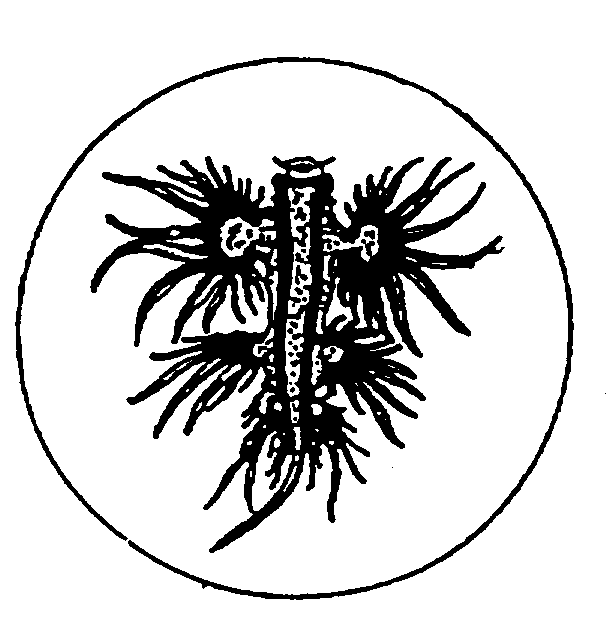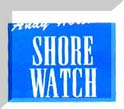
|
|
| Homepage |
| Index |
| News |
| Main Links |
 |
|
|
| Glaucus |
| Torpedo |
| Shorewatch Newsletter |
| Shorewatch Project |
|
Andy
Horton spends a year examining the biology and behaviour of the rock pool
fish and other marine life.
|
|
|
Green
Ormer
 |
Common
Name(s):
Green Ormer Ormeau Scientific Name: Haliotis tuberculata Family: Haliotidae (Ear-shells or Abalone) Usual Size: to 120 mm long Photograph by Sue Daly |
| Identification:
The Ormer is a single-shelled gastropod that crawls (limpet-like) over the rocks feeding on algae. It remains attached by a powerful green foot and shows a mantle of green. A curved line of round holes is distinctive and white parts of the mantle occasionally protrude from largest of these. The interior of the shell is a smooth nacre ("Mother of Pearl"). The outside is rough usually a dirty green or brownish colour. Occasional specimens could be red. The frilly margin running around the perimeter of the shell is called the epipodium. Similar Species: Common Ormer, Haliotis lamellosa (Mediterranean Sea only). Links for Images: Jersey Molluscs (UK Conchology) Ormer Feeding:
Up
to 12 cm long, Ormers are found in shallow water underneath weed-covered
rocks and boulders. Their muscular foot allows them a remarkable turn of
speed when they need to escape from a predator or inquisitive diver.
Further information on the family Haliotidae is also found in the book "Living Marine Molluscs" from page 50. The
rounded openings are used for the discharge of water from the mantle cavity
after the oxygen has been extracted.
Report:
This specimen (above) was found in a shell collection from Lancing, West Sussex, but it was probably brought back from abroad. The species has not been identified at the time of writing (16 January 2003). August 1999 Ormer Decline "For
the last three weeks now divers and snorkellers on the north coast have
been finding freshly empty shells. I found about 30 over one weekend. Normally
you may find one or two if you looked really hard. On a night dive recently
I have seen lobsters eating dead ormers, something I've never seen before.
Survey dives at various locations along the north coast have revealed the
same results. Our fisheries department did some survey dives at
All very, very depressing. As you have probably realised we are all very fond of ormers down here and proud to have them in our waters. They have been gathered by locals for centuries with ormering and ormer casserole a part of the island's heritage. Jersey's Environmental Services Unit and the Dept. of Agriculture and Fisheries are looking into the problem. The same thing happened this time last year along the French coast with a large proportion of their population dying out. It is also happening there again this year and they fear that those that survived last year will die this year. On a slightly brighter note - I was in Sark yesterday diving with some people from Guernsey and it seems that so far neither of these islands have been affected." by
Sue Daly (Jersey)
The Ormer
die off in Jersey is serious. An article in the Guernsey Press on
2 September 1999 said "that Jersey may close its ormer fishery this
winter". The mortality is reported at 50 to 60%. I spoke
to Grey Morel at Jersey Sea Fisheries. He said that this die-off
started in Southern Brittany in 1997, reached northern Brittany in 1998,
and now it is in Jersey in 1999.Guernsey is clear at the moment.An infectious
agent has not been discovered.
by
Richard Lord (Guernsey)
Historical
reports of ten tons being landed to the Jersey market and 30 tons being
in the market come from the latter 19 century are reflected with personal
catches before the ban being in 1999 being counted individually, a dozen
per fisherman being the average or good !
The following are pieces from the "Bulletin of the Jersey Society in London" published in 1959 In 1673 an article was written "News from the Channel" referring to Sark it said ormers were eaten fresh or pickled, and it went on about the delights of this delicacy. In
1859 F.C. Lukis wrote about the use of shells as in furniture.
in 1859 Jeffrey's writes "The principal use to which the shell now appears to be put to in the Channel Islands is to frighten away small birds from the standing corn, two or three of them being strung together and suspended from a stick so as to make a clatter when moved by the wind" I think the following was about Guernsey In 1923 T.A Stephenson carried out an investigation for the States. He stated that during the preceding 20 years catches had diminished from 10 to 14 dozen to only 3 dozen per head. At his suggestion ormering was suspended from 1924 to 1926. Report
by Nicolas Jouault
Eating: The mollusc is eaten in France and the Channel Isles. The rather tough flesh is first battered and tenderised before being fried. The flesh has an appealing sweet smell. Collecting:
Etymology: < French regional (Jersey and Guernsey) ormer, variant of French ormeau (1563 in plural as hourmeaux ), either shortened < oreille de mer (although this is first attested later: 1611 in Cotgrave), or < an unattested post-classical Latin *auris maris sea-ear ( < auris shell (5th cent.), spec. use of classical Latin auris ear (see auricle n.) + maris , genitive singular of mare sea: see mare n.4), with allusion to the shell's resemblance to an ear. 1637
E. Gregory & L. Dickenson Brit. Patent 101 (1857) 3 The
saide arte or misterie of takeing away the outsides of the saide shells
called ormers shells.
OED Extracts Further Information: Abalone
Facts
http://hannover.park.org/Guests/Shells/Shell_Catalogue/Shell_Pages/
Phylogeny
of Abalone
The
Epipodium of Abalone
Abalone
Mapping Project
Article:
Information wanted: Please send any records of this invertebrate, with location, date, who discovered it, how it was identified, prevalence, common name and any other details to Shorewatch Project EMail Glaucus@hotmail.com. All messages will receive a reply.
|
|
|
|
|
|
News 2018 |
Membership Form |
|
|
Use these links if your are familiar with the scientific classifications of marine life |






